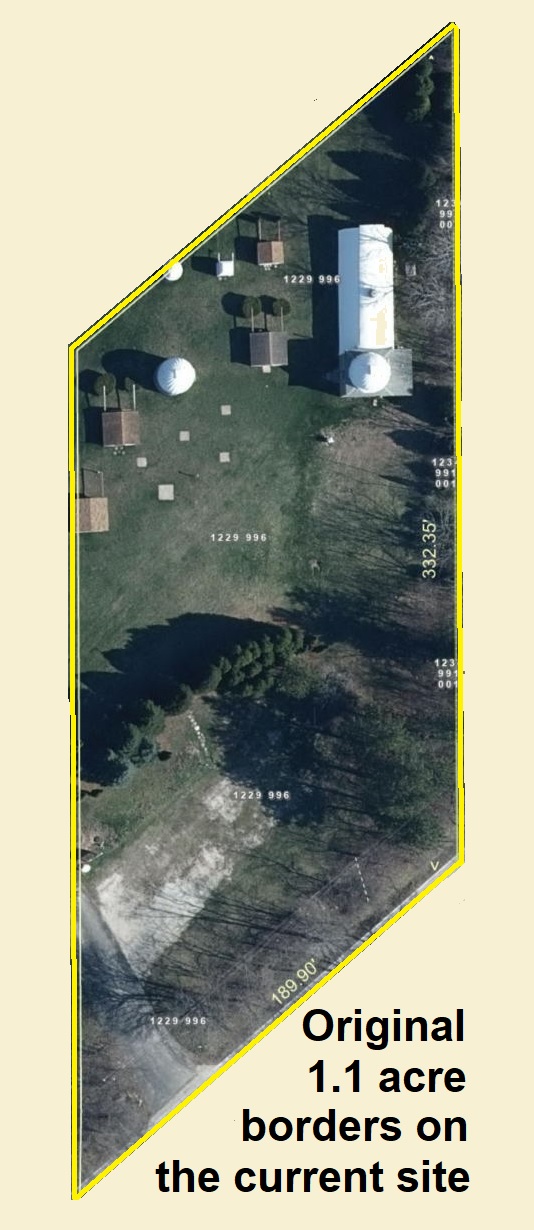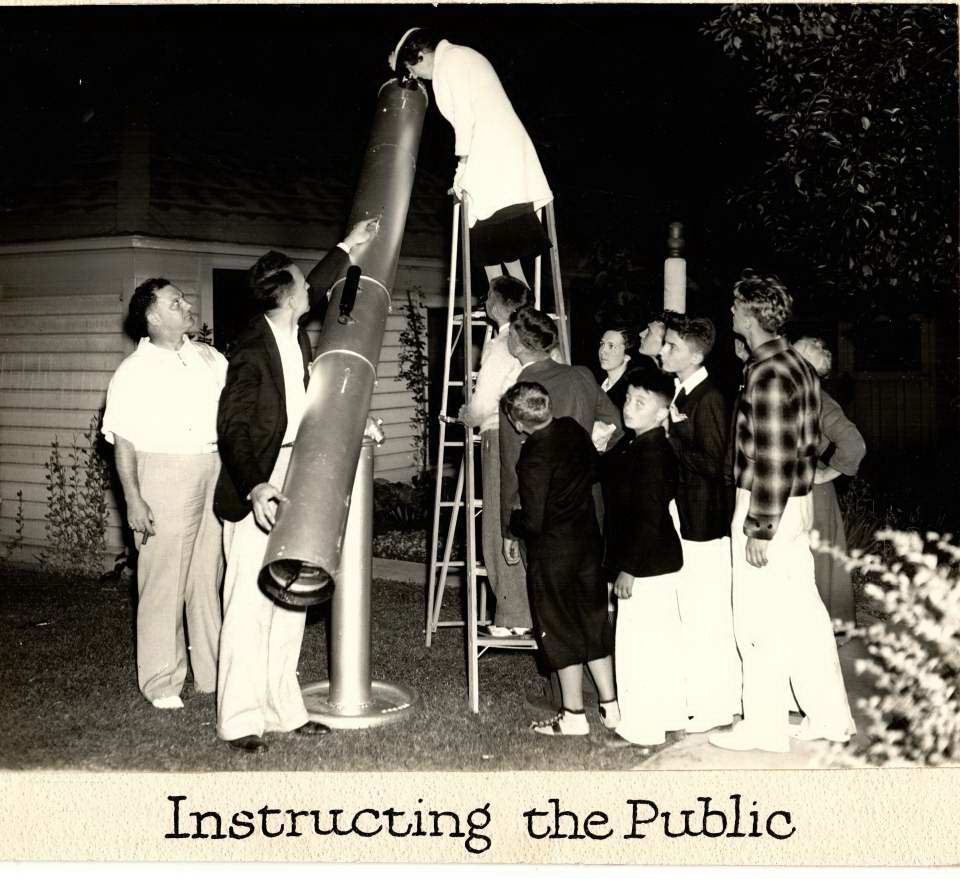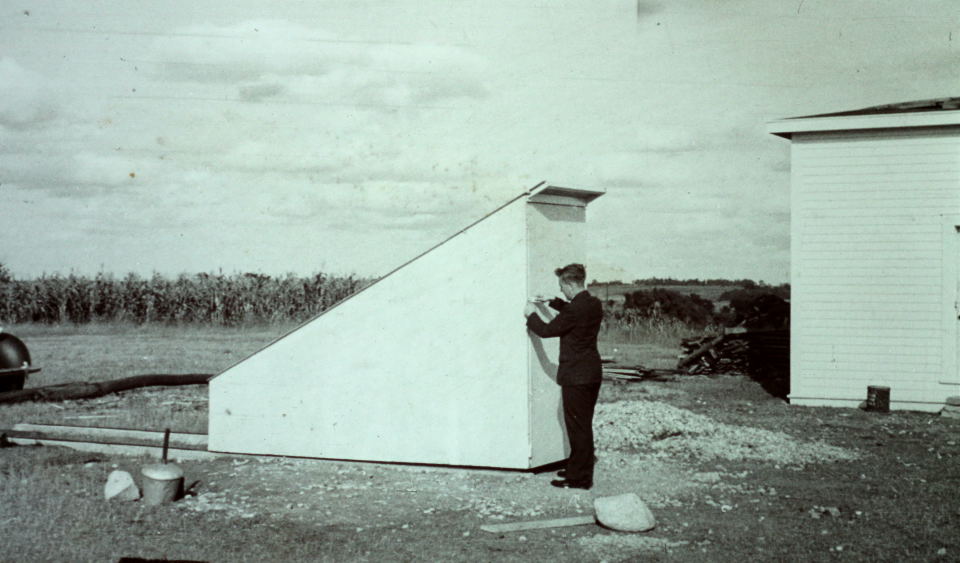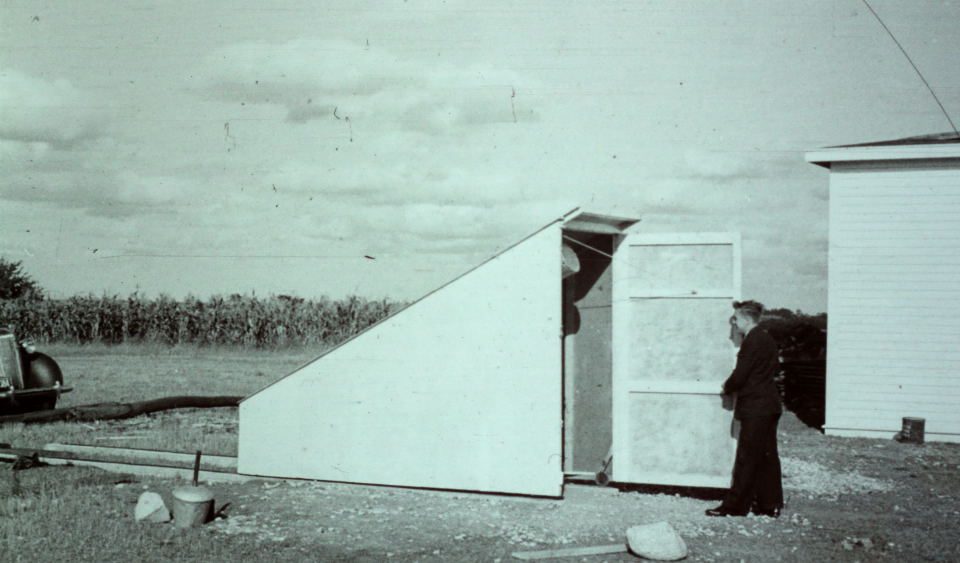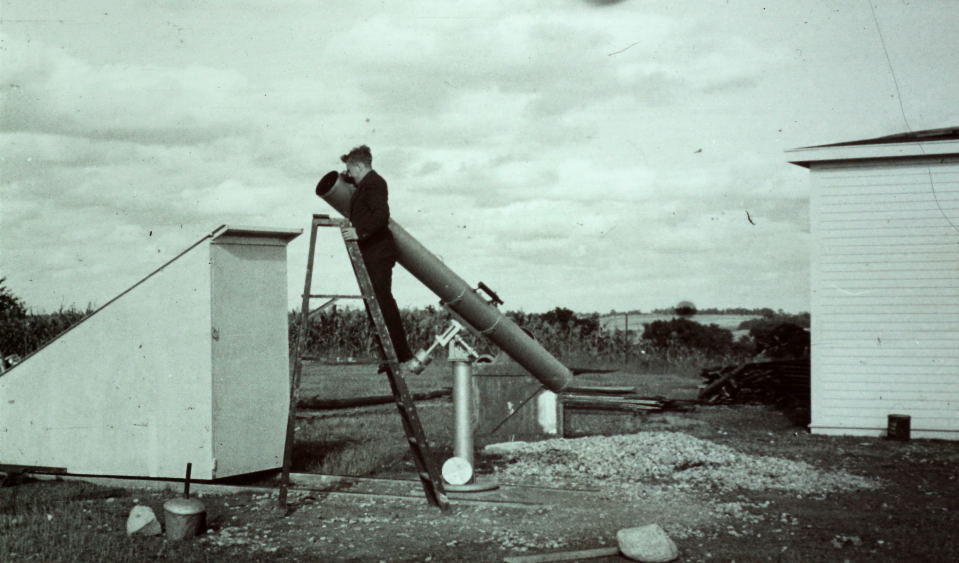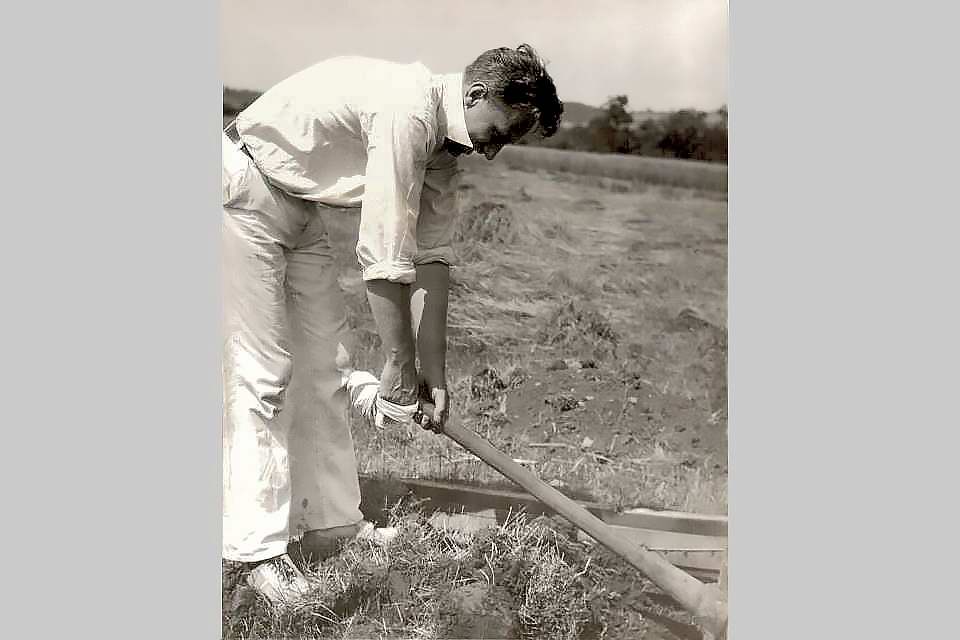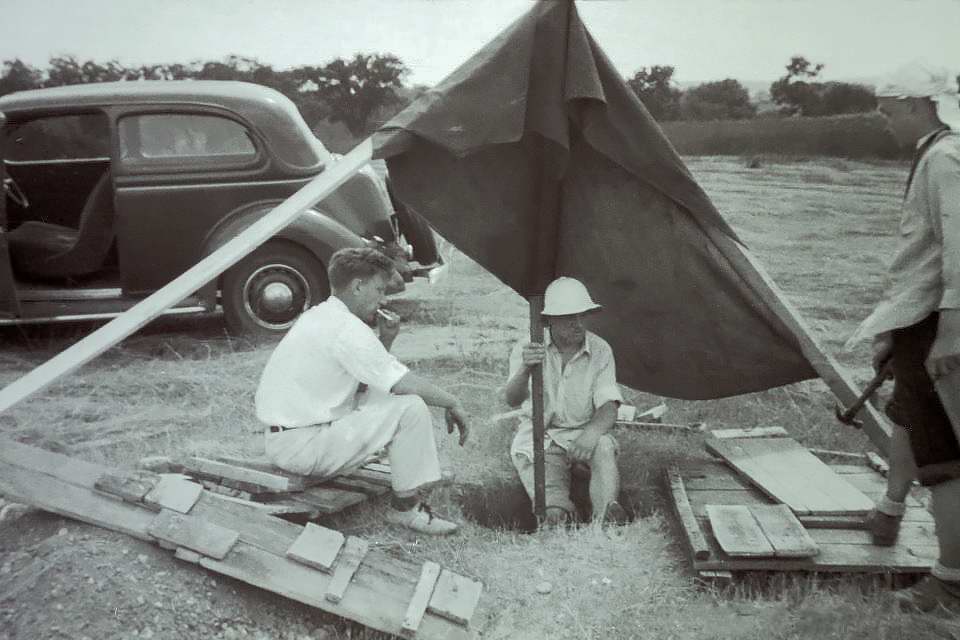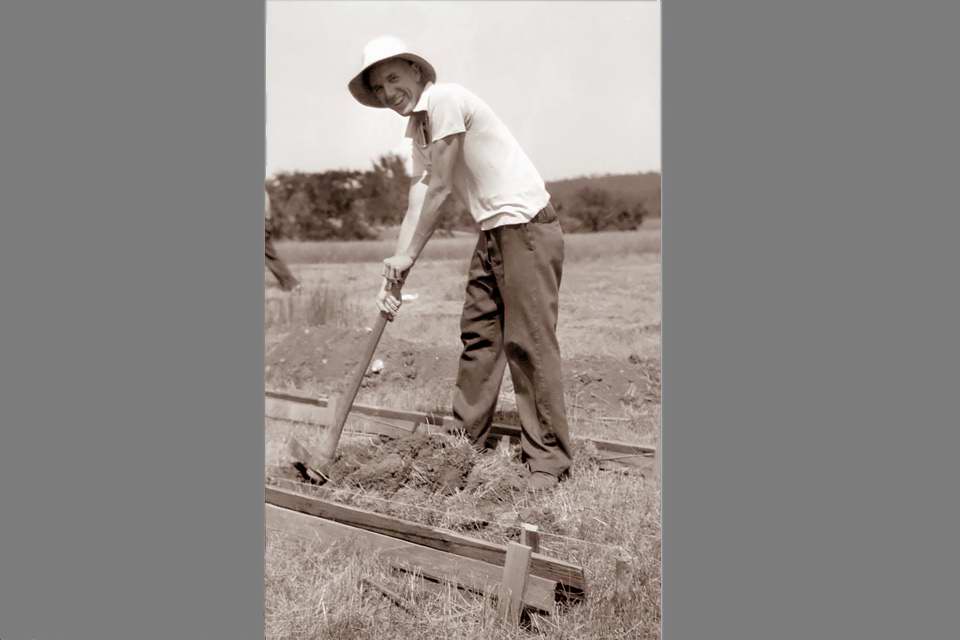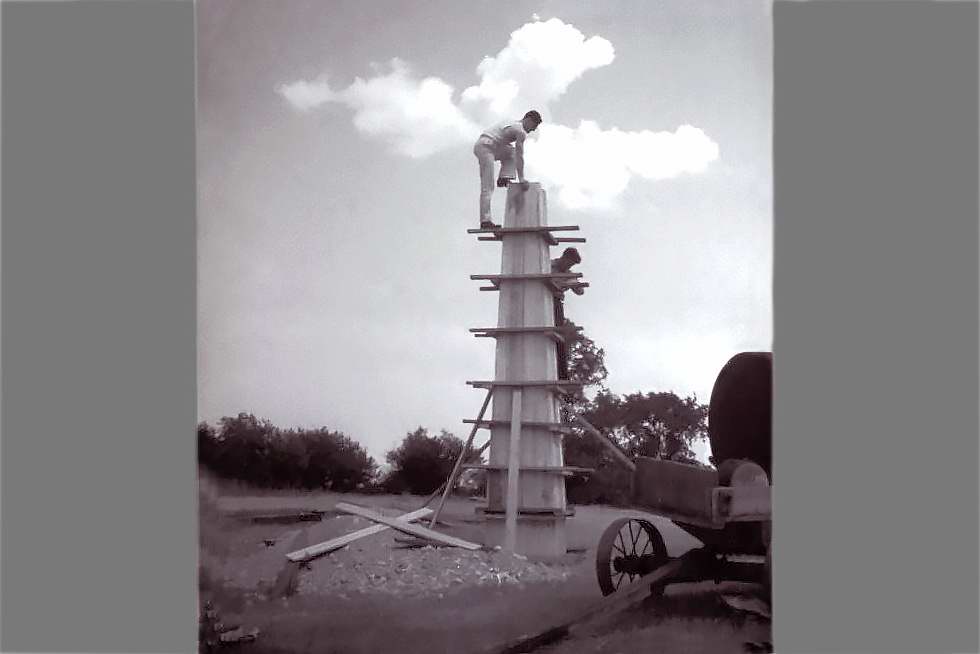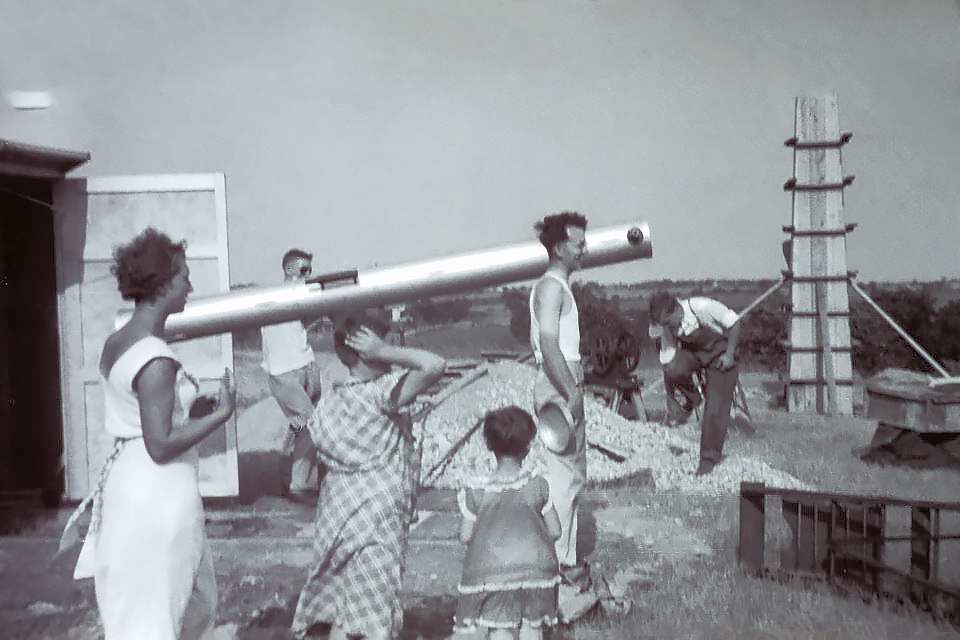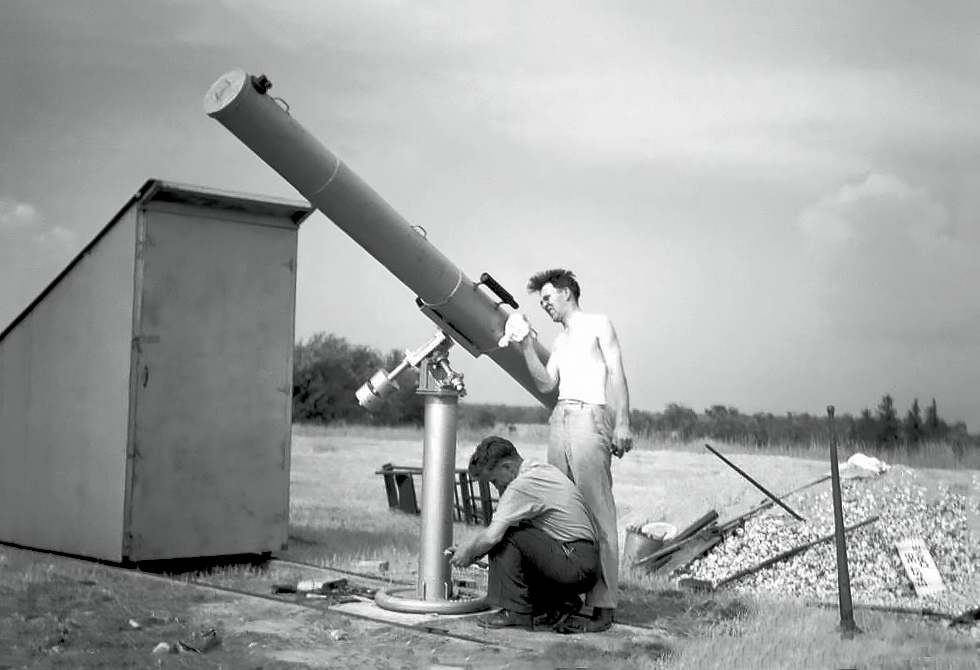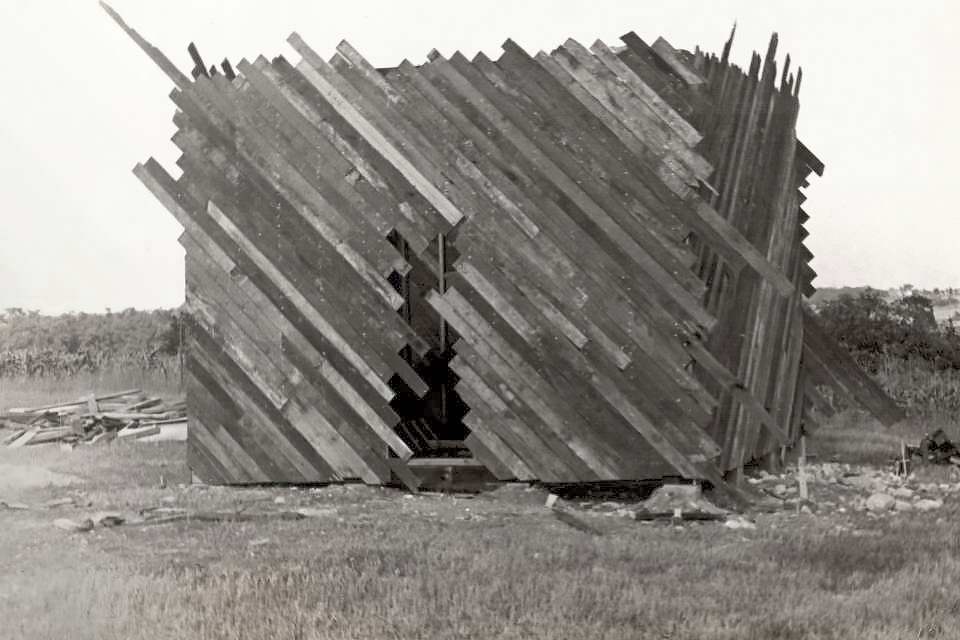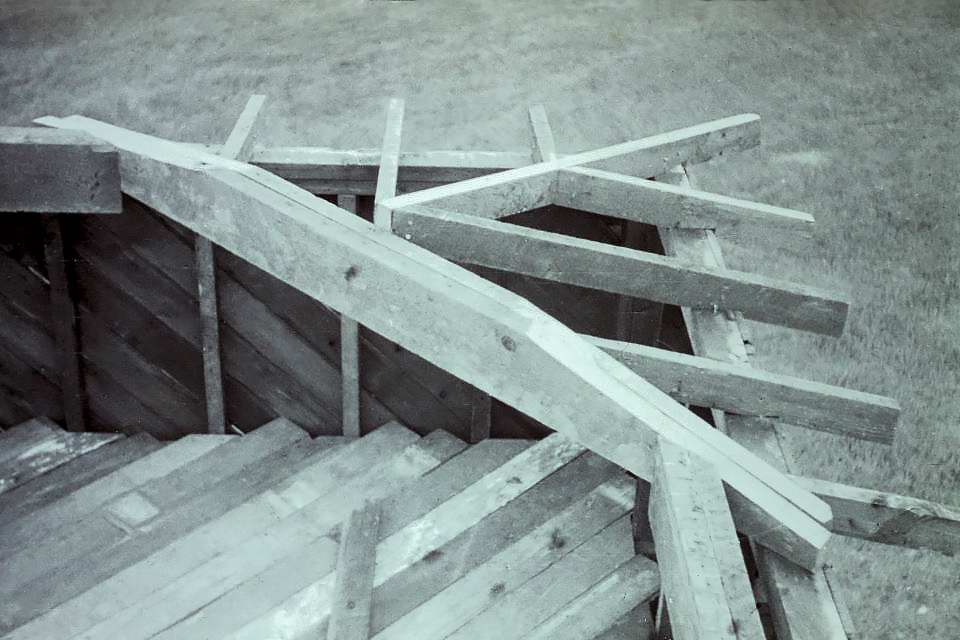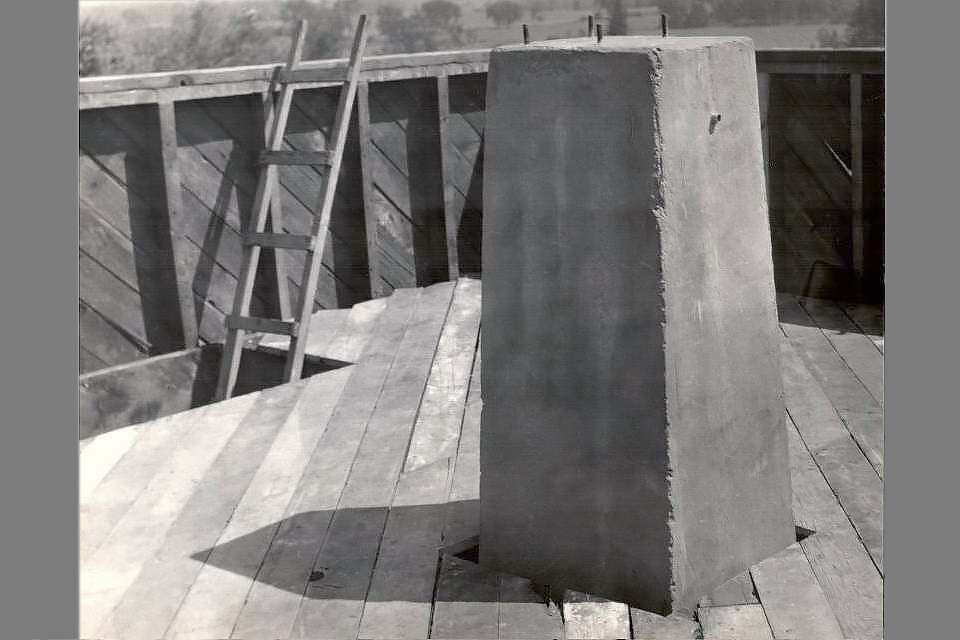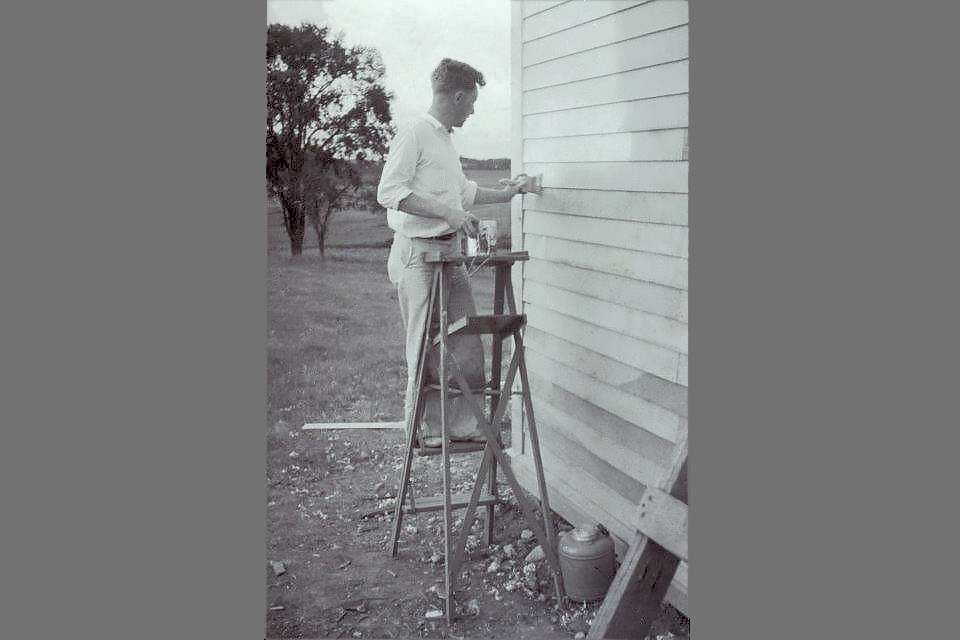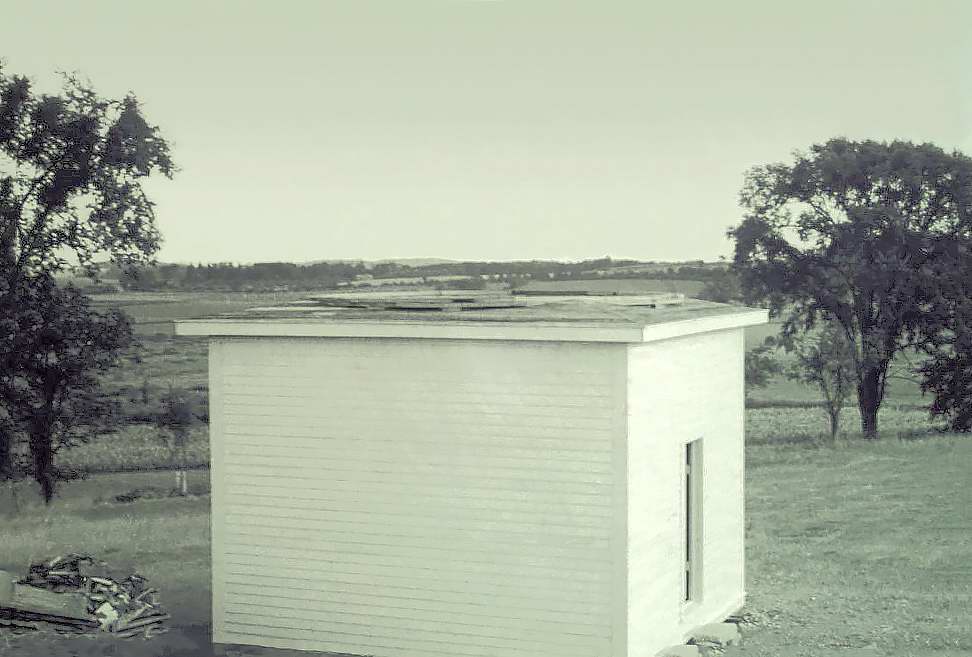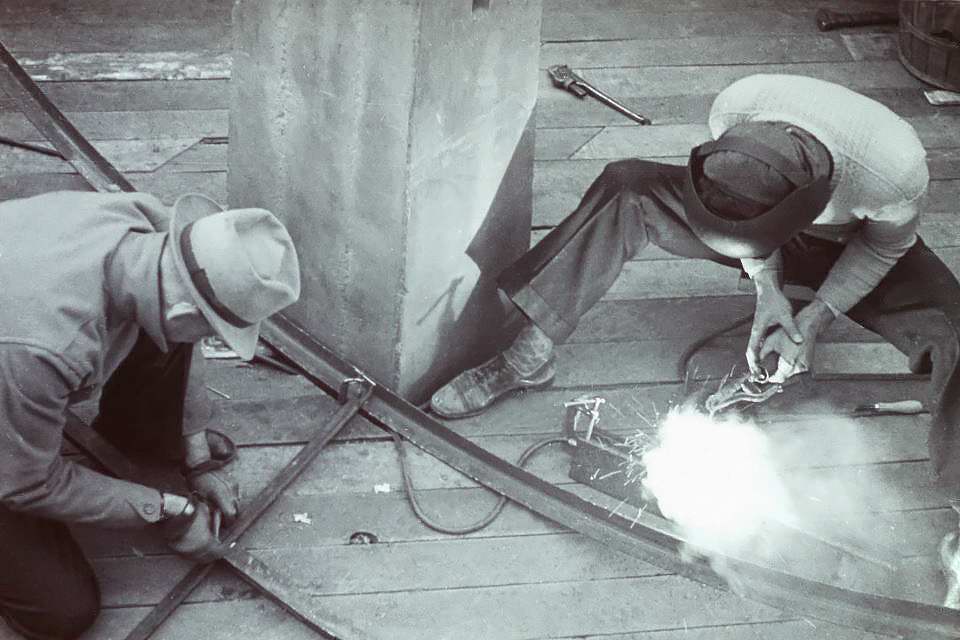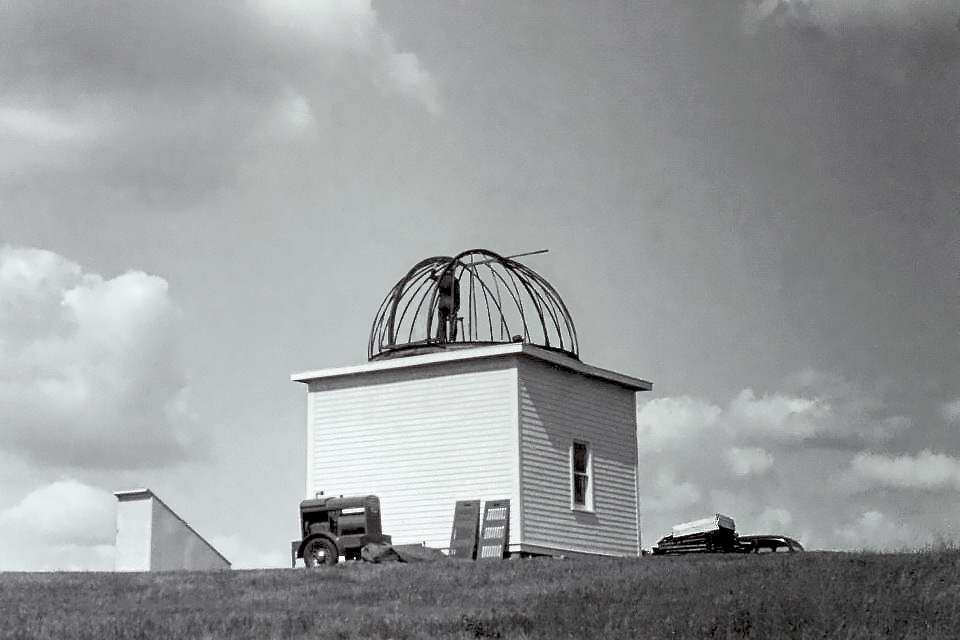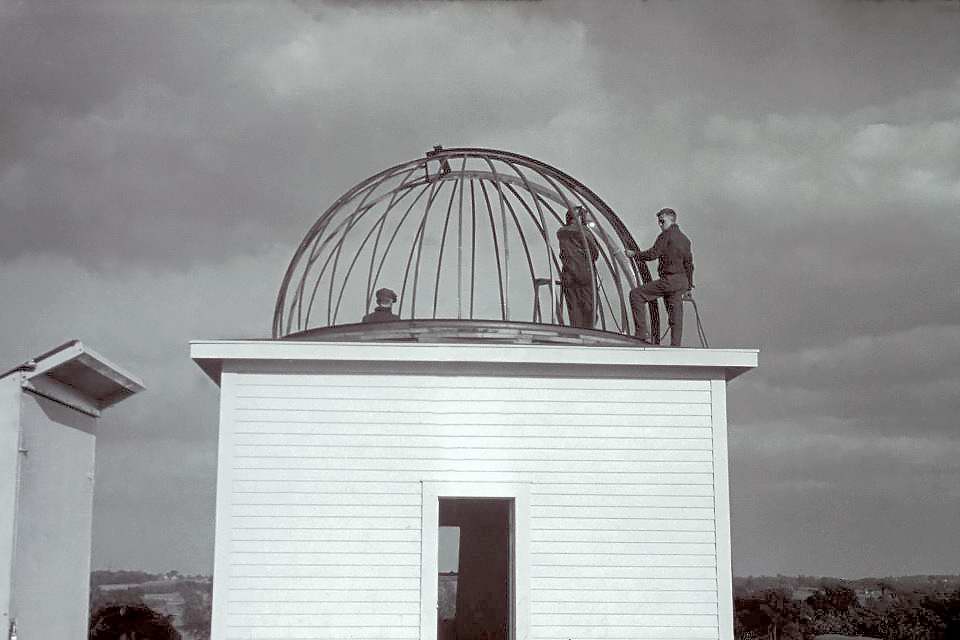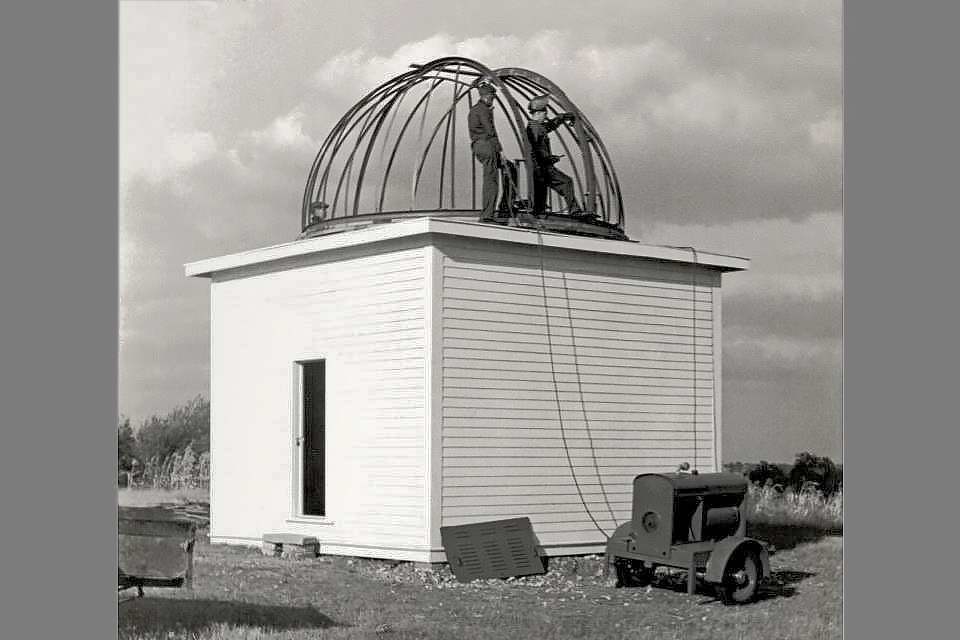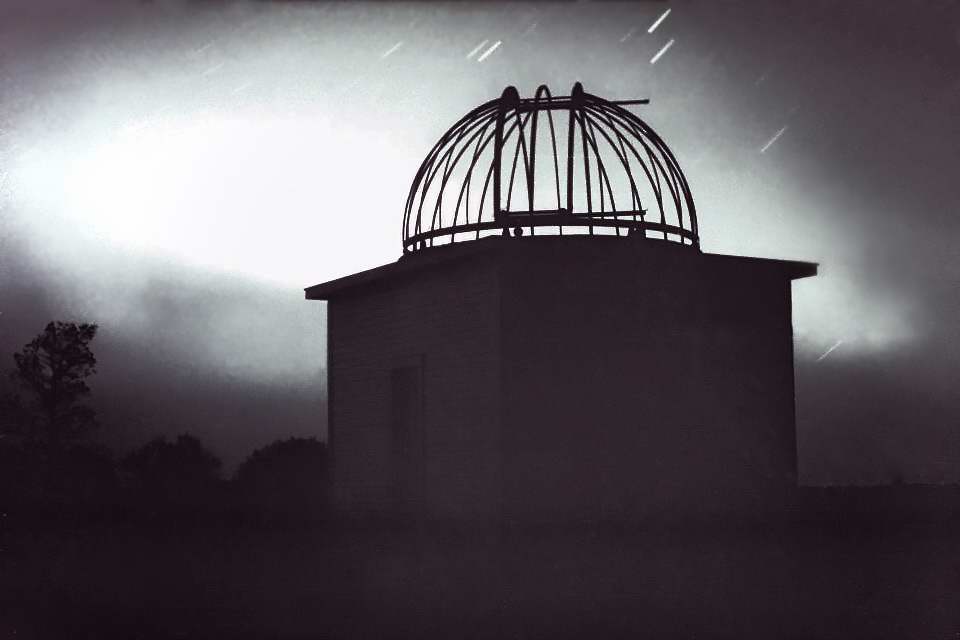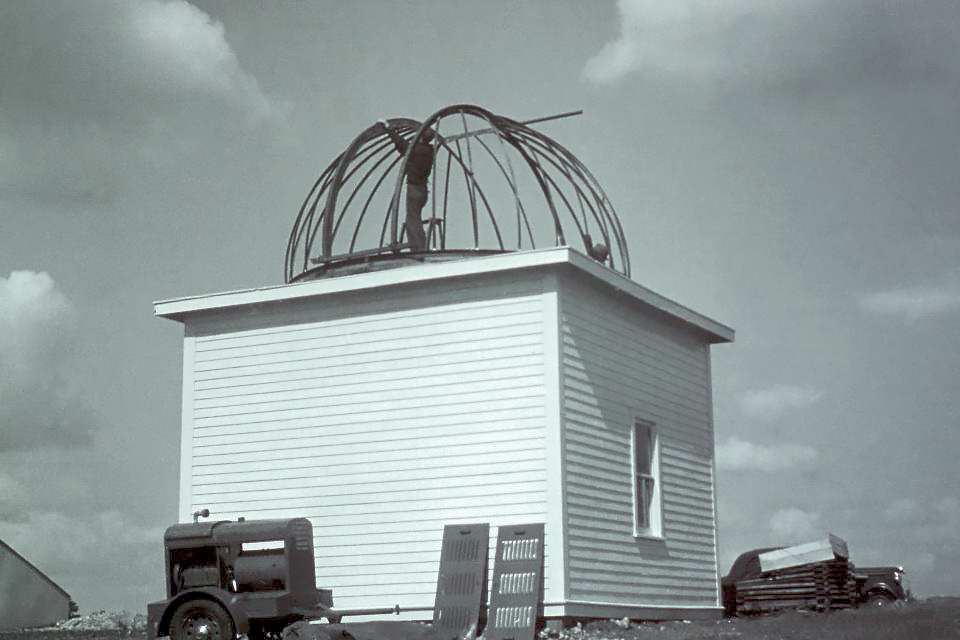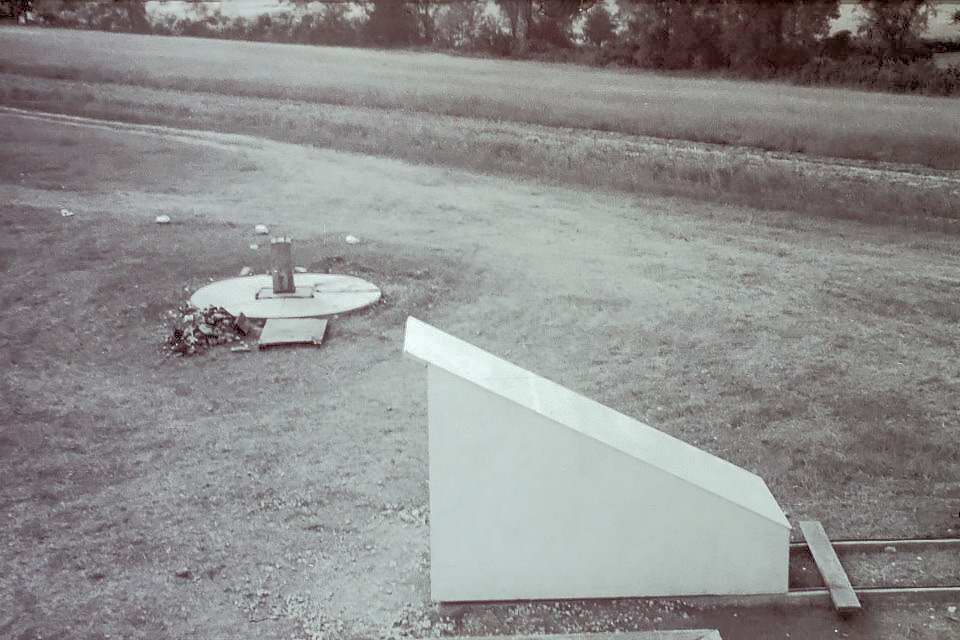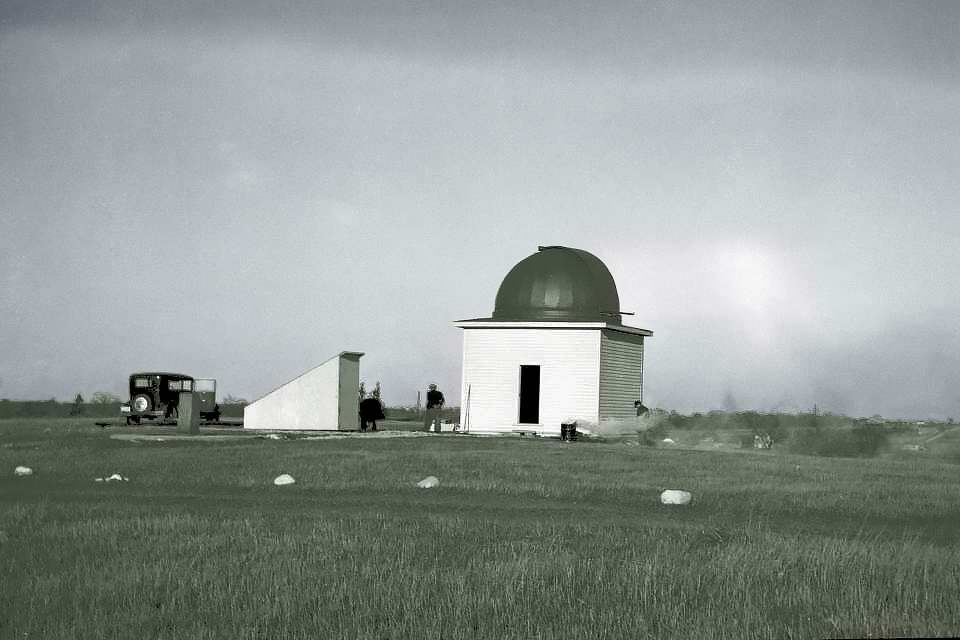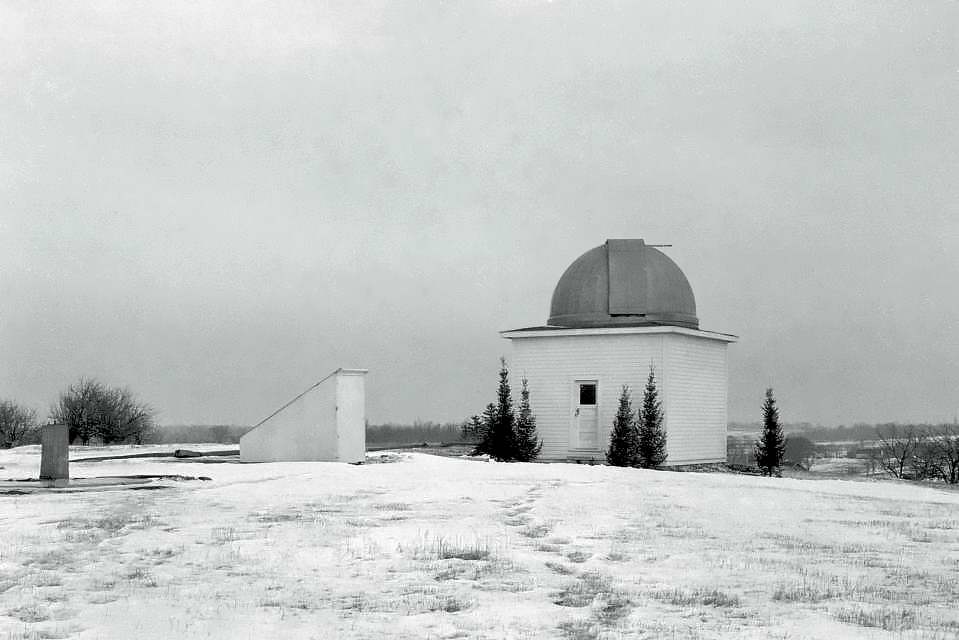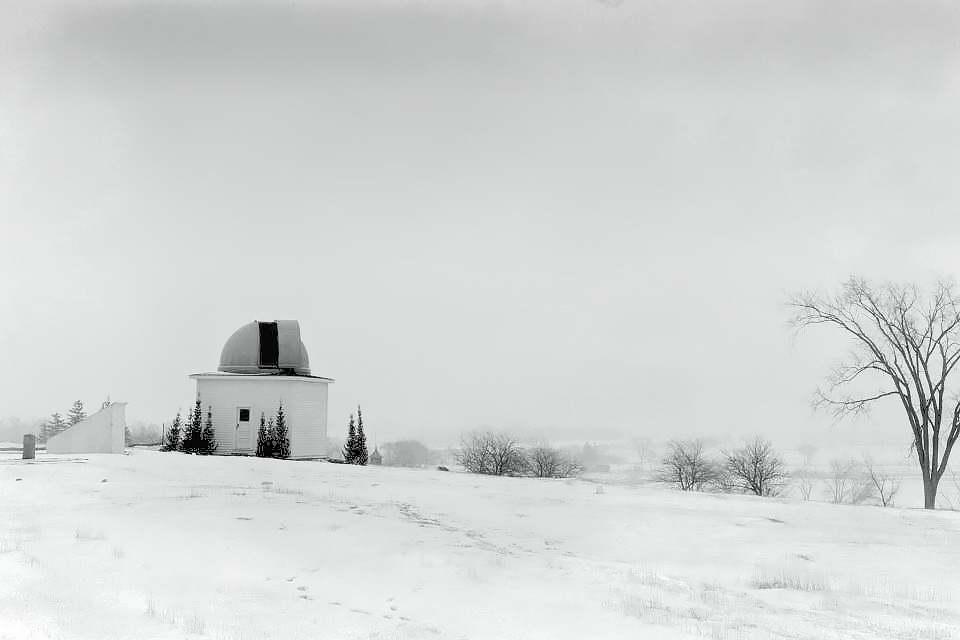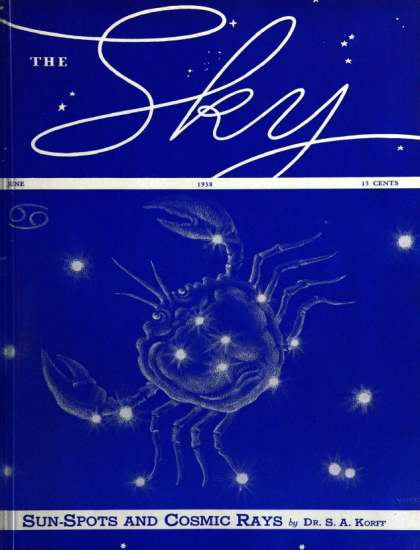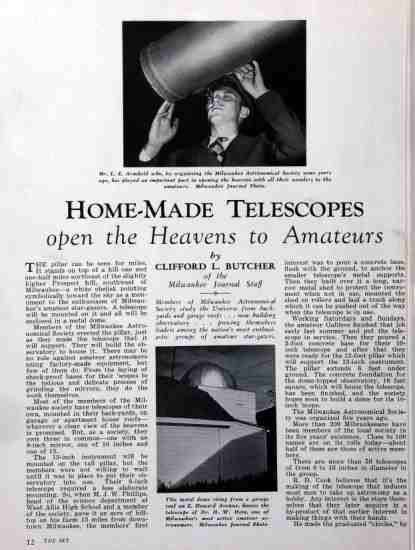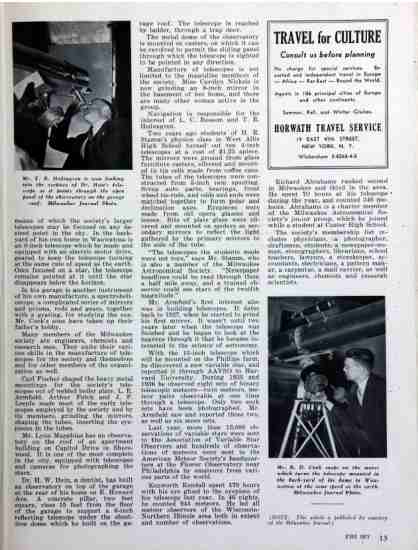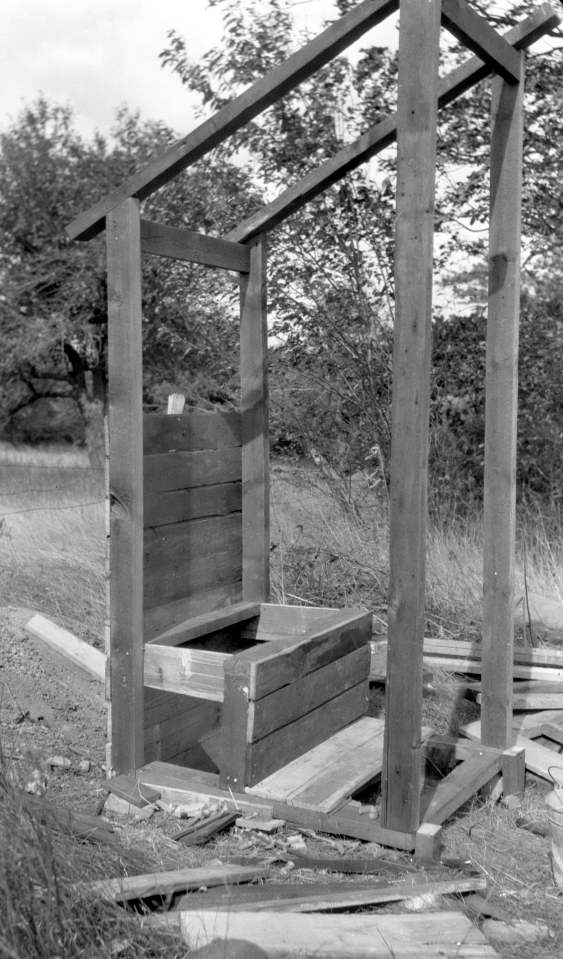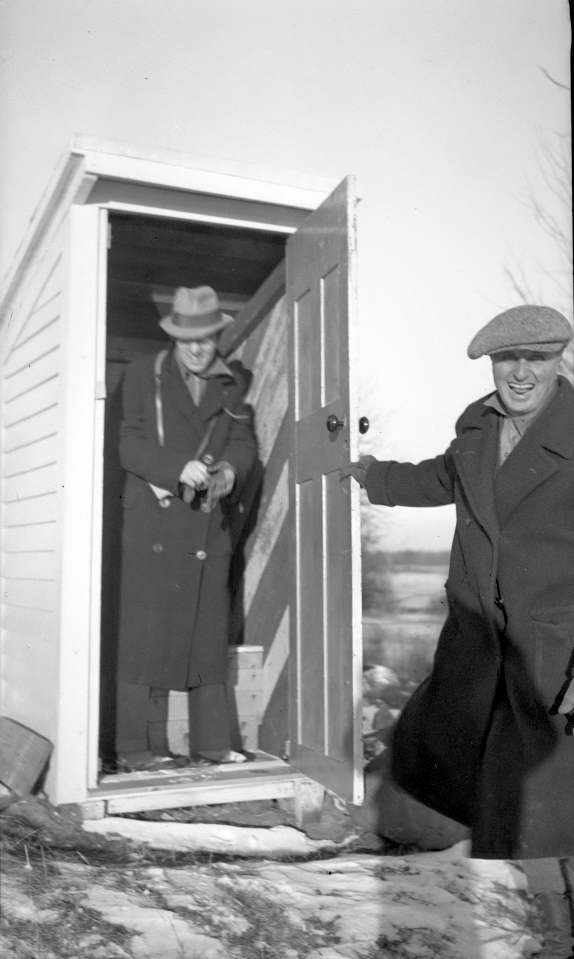History of the Milwaukee Astronomical Society
1936: Observatory Established
It is important to note that though the offer of land has been made and tentatively accepted, the MAS has not formally acccepted. That is because in order to take possession of the land an observatory has to be constructed. So as we start 1936, there are still no credible plans and it isn't clear that the club will ever be able to construct an observatory. By the end of the year, however, the society will finally decide to utilize the property.
In May of 1936, new member, A. C. Tabbatt, who was primarily interested in planetary observation, stated that he wanted a large telescope for that purpose and would put up the funds necessary for its completion. It was decided that it would be an 8-inch, f/15 reflector! The mirror would be ground by Joseph Loepfe and the mount designed and built by Ed Halbach.
The final mirror had a focal length of 122 inches (f/15.25) in a tube 9.5 inches in diameter and 120 inches in length on a massive equatorial mount that by necessity had to be permanent. It was completed by July and successfully tested. The observatory for this scope was a rollaway structure, constructed of masonite pressed wood on a wood framework. The dimensions were 4X10 feet, 7 feet high at the door and 2 feet at the end. That structure was completed by September and it was placed roof of a south side building.
Sometime during the summer of 1936 it was finally decided that the site that member Matthew Phillips offered should be developed, regardless of the difficulty, especially the financial aspect, utilizing the time and skill of members of the MAS. It was hoped that they could complete a domed observatory to house the 13-inch telescope by winter, but all that could be completed was the surveying for the location of the two piers.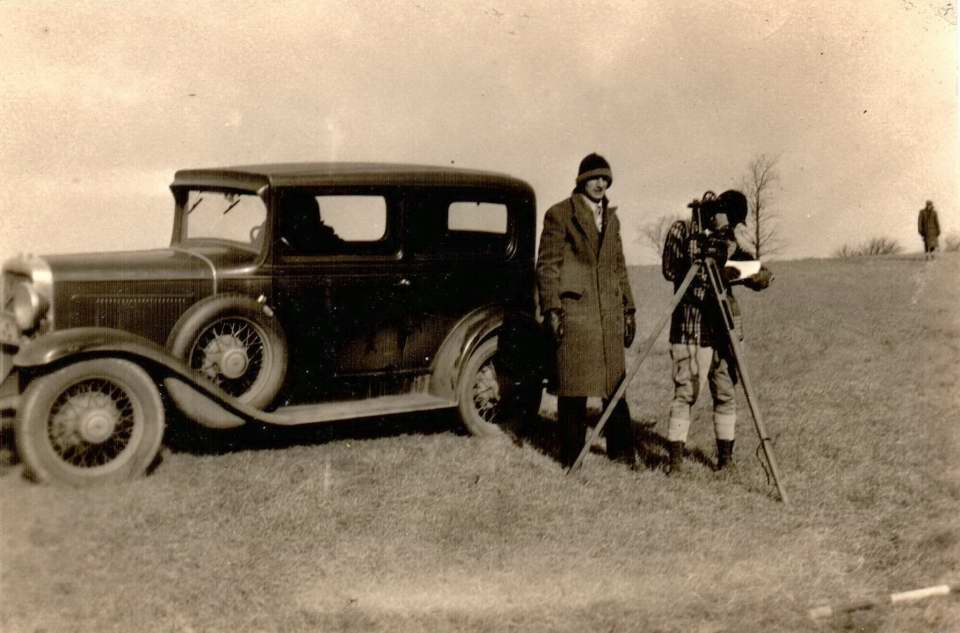 The impetus for this was not generally known to the membership, but Armfield was in the process of getting a divorce
and knew he would have to vacate his home in West Allis that had served as the MAS Observatory. In October he vacated and
with that was the loss of the 13-inch reflector. But sad as this was, there were two silver linings:
1) They now had time to work on the
telescope and give it a variety of upgrades, and
2) It lit a fire under the MAS
to finally act on the land offer by Phillips and start development.
The picture shows members Carl Frister and Frank Dieter in the late fall of 1936 surveying the property for the start of the
development.
The impetus for this was not generally known to the membership, but Armfield was in the process of getting a divorce
and knew he would have to vacate his home in West Allis that had served as the MAS Observatory. In October he vacated and
with that was the loss of the 13-inch reflector. But sad as this was, there were two silver linings:
1) They now had time to work on the
telescope and give it a variety of upgrades, and
2) It lit a fire under the MAS
to finally act on the land offer by Phillips and start development.
The picture shows members Carl Frister and Frank Dieter in the late fall of 1936 surveying the property for the start of the
development.
The 13-inch reflector had been pretty hastily put together so it could be put into operation ASAP. It didn't have a clock drive, setting circles, and it needed a proper mirror cell, the original one made of wood. But besides these upgrades, they added limited slow motion control in both declination and right ascension. The work on the telescope started in the winter and occurred in the basement of the home of Ray Cooke. The work was performed by Cooke, Ed Halbach, Cornelius Prinslow, and Bill Albrecht. The work would not be completed until early 1938.
1937: A Shed and a Domed Observatory
 In June of 1937, it was decided that the construction of an observatory should be started
immediately according to the
original plans (see below). Before the meeting ended, $40.00 in cash was placed on the table by those present and promises
were made for more money to meet the first construction expenses. Mr. Phillips further offered to provide all
materials and tools for building the pier.
In June of 1937, it was decided that the construction of an observatory should be started
immediately according to the
original plans (see below). Before the meeting ended, $40.00 in cash was placed on the table by those present and promises
were made for more money to meet the first construction expenses. Mr. Phillips further offered to provide all
materials and tools for building the pier.
The original plan is shown in the above animated GIF. The building which would be started in July would be the first of several units which would become one larger complete building. When funds were secured, a second unit of about the same size as the first would be constructed 50 feet directly west and the two buildings then connected by a one-story office/meeting hall which could be heated. Directly north of the center point between the two domes, there would be a larger unit to house possibly a 20 to 30 inch reflector. Click here or on the image above to see how this compares to what we have at the observatory today.
But there was a slight detour in the plans. Tabbatt decided he couldn't use the scope as planned so allowed both the telescope and rollaway shed to be moved to the site (he would later donate both) and that started on July 1, 1937 and finished by the 5th. The photos below show George Diedrich opening the roll-away and then at the eyepiece of the telescope. In time, this structure will eventually be called the C-Shed. Today, the Albrecht Observatory is on this spot. As a footnote, Bill Albrecht, helped dig the footings for Tabbatt's telescope.
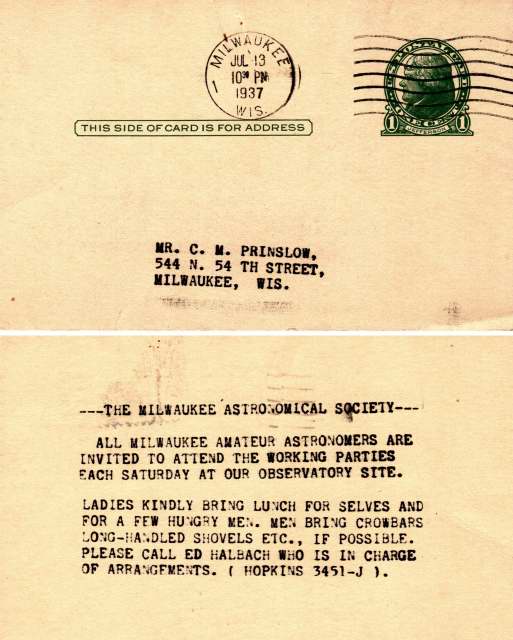 In
July, ground was broken by the digging of a hole six feet deep to receive
the form for the pier. The portion under ground was made three feet square
and extended 12 feet above ground, tapering to a cross section of 12 by 18
inches at the top. This great height was needed to place the telescope in
the second story of the observatory to conform with the original plan. Most of the labor was supplied by the membership
and the rest by local industry which was donated.
And it was quite a feat to hoist the concrete for the 8-ton pier to the top of the form which was 12 feet above
the ground with just small buckets. An account was given in the Milwaukee Journal quoting a member,
"We poured the cement down pail by pail. Toward the last we were so exhausted that we were ready to throw in the pails
to fill up space."
In
July, ground was broken by the digging of a hole six feet deep to receive
the form for the pier. The portion under ground was made three feet square
and extended 12 feet above ground, tapering to a cross section of 12 by 18
inches at the top. This great height was needed to place the telescope in
the second story of the observatory to conform with the original plan. Most of the labor was supplied by the membership
and the rest by local industry which was donated.
And it was quite a feat to hoist the concrete for the 8-ton pier to the top of the form which was 12 feet above
the ground with just small buckets. An account was given in the Milwaukee Journal quoting a member,
"We poured the cement down pail by pail. Toward the last we were so exhausted that we were ready to throw in the pails
to fill up space."
In delivering the 10 cubic yards of crushed stone and sand for the concrete, the Kohler Gravel Company donated half in exchange for a glimpse of the heavens when the telescope was completed. At this time a smaller pier was poured 50 feet west for a future 10 or 12 inch telescope. (It will one day become the Buckstaff Observatory - The B-Dome.)
The plans called for a frame building 16 feet square and 13 feet high, supporting a 14 1/2 foot dome. Twelve small concrete piers were laid to support the building and dome. The frame and sheathing of used lumber were covered with new siding.
Local industry provided workmen to help with the dome which was fabricated in place with welding done by Nordberg Mfg and the portable arc welder was furnished through the courtesy of Harnischfeger Corporation. The dome was designed to be motorized, but that would have to come later. All other funds were donated by members and other equipment was supplied by the Phillips farm. And in order to get power for the new observatory immediately, the MAS ran a 1500 foot electric line from the neighboring Phillips farm.
Note: Much of the information about the construction of the observatory (and often word for word) is from an article by Ed Halbach published in the June-July, 1938 issue of the AAAA. You can read that account here on page 14 of the document.
The MAS was featured in an article that was published in the magazine The Sky in June, 1938, issue. The article was entitled, "Home-Made Telescopes Open the Heavens to Amateurs." We show it here on the MAS timeline because it was a reprint of a Milwaukee Journal article that was published in the summer of '37. Note: The pages shown are just for basic display. Due to copyright, they have been reduced to a size and resolution where they cannot be read. If you are a member of the MAS, we own a copy of this and it is available for viewing at our observatory.
Though there is no documentation in any of the known MAS records, sometime in 1937 they constructed an outhouse. It was not on the the property, but just north so technically on the Phillips farm. But it had to be okay as they knew and naturally the facility would be available to the Phillips farm. The club will utilize this outhouse until 1965 when regular restrooms will be constructed.
Solar Cycle 17
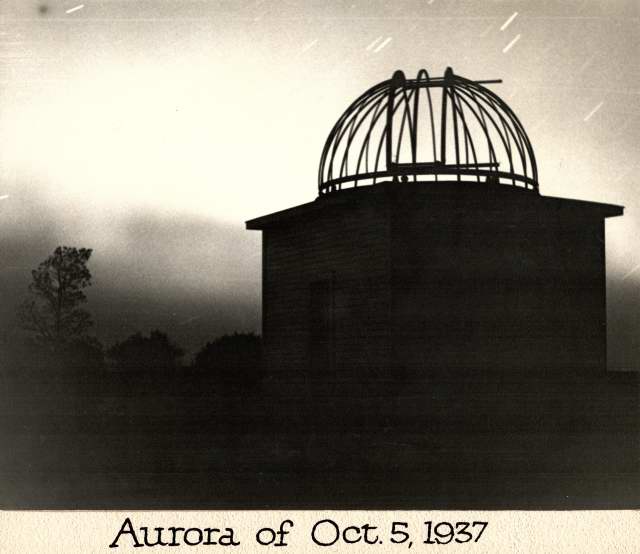
The construction of the MAS Observatory and a few years following were at the maximum of Solar cycle 17 which started in September 1933 and ended in February 1944. During the period of maximum there are many accounts of aurora activity seen from the observatory.
The photo at the right was taken on October 5th by Ed Halbach. This photo is included in the slide show of the observatory construction. The photo was placed on a poster board with the caption added. In the background you can see the stars that form the front claw of Ursa Major. In the trio of photos below you can see the sunspot activity on that date.
The photos above were taken by Ed Halbach with a 5-inch refractor. These three photos were then put onto a poster board with captions so it could be displayed at shows and eventually the observatory.

